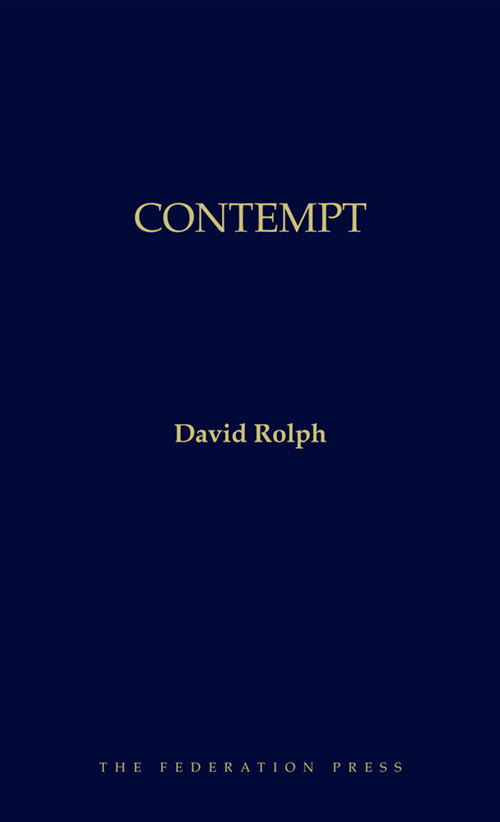- Autumn 2024
- Contempt by David Rolph (Federation Press, 2024)

It is a legal commonplace that contempt may take many forms. It may be committed by publishing material about proceedings before a court (so-called sub judice contempt). It may be committed by disruptive behaviour in court. It may be committed by breaching court orders or an undertaking to the court. It may be committed by undermining court orders binding upon others. It may be committed by disclosing jury deliberations. It may be committed by a witness refusing to answer a question. The categories of conduct are not closed.
In a general sense it can be said that the central concern of the common law of contempt is the vindication and protection of the due administration of justice by courts. But because the sources of interference with the administration of justice are many and varied, the substantive content of the law of contempt covers a wide range of circumstances and must balance a wide variety of interests.
One significant interest that is frequently in play is the freedom of communication about matters that are before the court, and about the court itself. In the foreword to Contempt, Gageler CJ observes that Australian courts have, by and large, exercised restraint in safeguarding themselves against criticism. Thus, the High Court refused to find contempt in a newspaper article describing Higgins J as a ‘political judge’ who had been ‘appointed because he had well served a political party’ and that he ‘seems to know his position, and does not mean to allow any reflections on those to whom he may be said to be indebted for his judgeship’.1
The application of the law of contempt presents a number of practical difficulties. One is that it is an area of law that – to a large extent– defies classification and lacks coherence (although one significant contribution of Professor Rolph’s book is to provide a meaningful taxonomy). Another is that it is a body of law that practitioners and judges usually only consider as and when the need arises. In many circumstances, the need for a clear answer is immediate, whether that be to avoid acting in contempt or to address allegations of contempt. Presiding judicial officers – in particular – are placed in the invidious position of being prosecutor, witness, and judge of the cause. And until publication of Professor Rolph’s book, there was no readily available and digestible statement of the relevant principles.
In some respects, this work moves beyond the law of contempt. Chapter 1 discusses the important principle of open justice that is relevant not only to the law of contempt, but also informs the courts’ approach to the making of suppression and non-publication orders (a topic addressed in detail in chapter 12). Chapter 2 describes the differences between civil contempt and criminal contempt, before embarking upon a detailed analysis of the law relating to the various categories of contempt (chapters 3 to 10), and a discussion of contempt of non-judicial bodies (chapter 13). Understandably, the book omits discussion of contempt of Parliament, which would require an entire volume of its own. Finally, the book concludes with a discussion of procedural aspects of the law of contempt (chapter 13) and penalties and relief (chapter 14).
Professor Rolph’s magisterial work is vast in its scope and detailed in its treatment. There is extensive reference to both Australian and overseas authority, as well as relevant statutory provisions in every Commonwealth jurisdiction. The analysis of those authorities is rigorous and thorough, but it is not dogmatic; Professor Rolph acknowledges the uncertainties in the law and its application. It fills a significant gap in Australian legal scholarship. It also fills a significant gap in the education of those practitioners who did not undertake study in media law and whose exposure to the law of contempt will have been incidental at best (or, at worst, borne of necessity in practice). BN
ENDNOTES
1 R v Nicholls (1911) 12 CLR 280. Norm Gallagher might quarrel with this conclusion, having been imprisoned for contempt for suggesting that a favourable decision from the Full Federal Court was a result of strike action by the rank and file of his union: see Gallagher v Durack (1983) 152 CLR 238.

